Retinitis Pigmentosa
How to submit an article:
- Registered users can submit any published journal article that has a unique DOI (Digital Object Identifier) name or link to Research Hub.
- For example, you can paste the full DOI link:
https://doi.org/10.1109/5.771073or just the DOI name:10.1109/5.771073into the field above and click submit. - The person who is first to submit a valid article to Research Hub will forever be credited for it, and every article submission earns you +6 Research Points.
Published research studies are articles that present the findings of original research that has undergone a peer-review process and has been made publicly available in scholarly journals, books or other media.
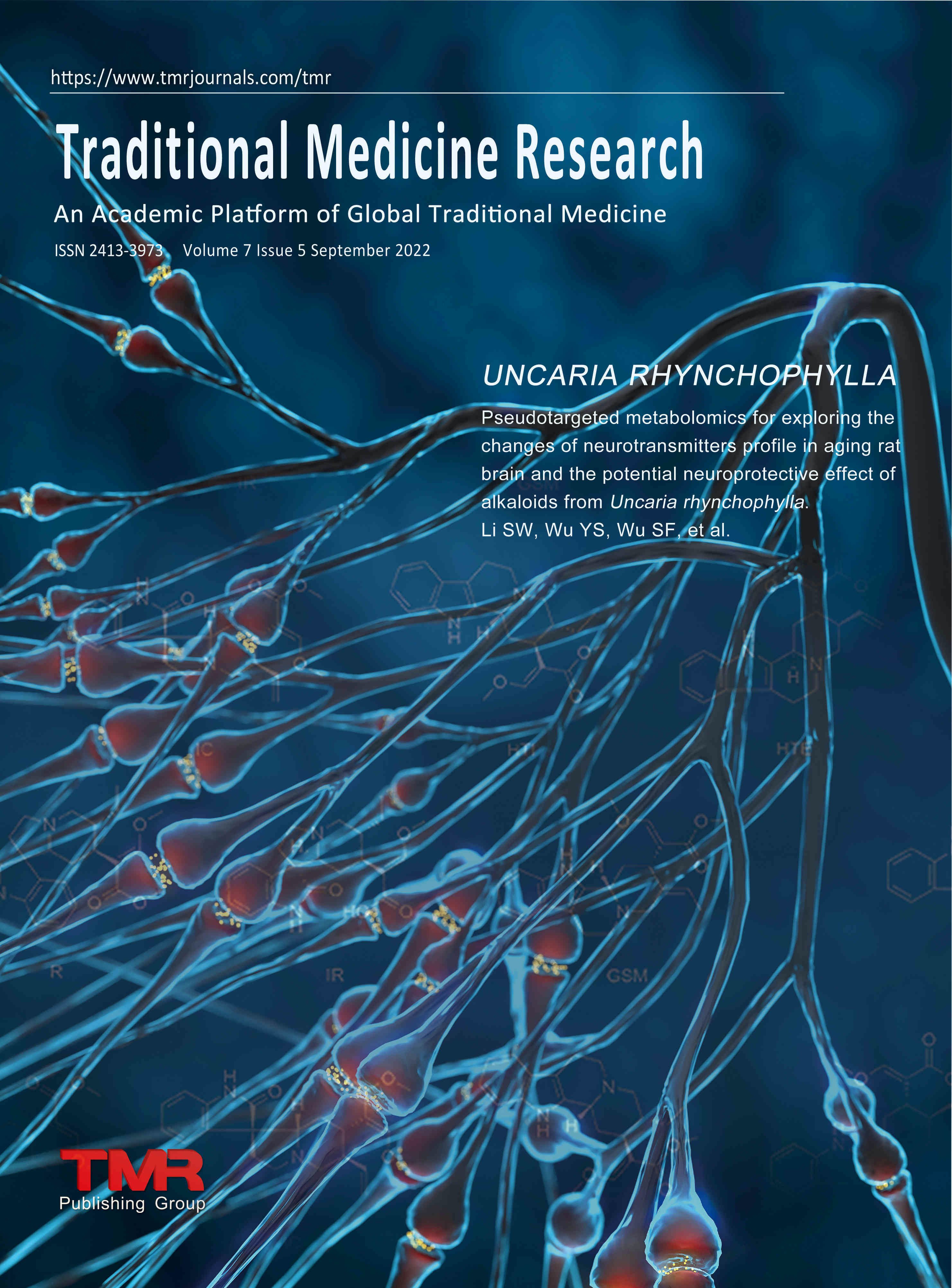
Exploring a novel traditional Chinese medicine prescription containing Chrysanthemi Flos for retinal diseases: an integrated strategy of data mining and network pharmacology
2024 Jan Traditional Medicine Research Zhang JX, Zhang KL, Chang XW, Gu JF, Wei SB, Zhu BY, et al.
Data Mining Network Pharmacology Chrysanthemum Retinitis PigmentosaThe traditional Chinese medicine prescription combination of Chrysanthemi Flos, Cassiae Semen, Lycii Fructus, Angelicae Sinensis Radix and Salviae Miltiorrhizae Radix et Rhizoma presents potential for treating retinal diseases.

Qi-Shen-Tang alleviates retinitis pigmentosa by inhibiting ferroptotic features via the NRF2/GPX4 signaling pathway
2023 Nov Heliyon Xiong M, Ou C, Yu C, Qiu J, Lu J, Fu C, et al.
Experimental Study Ferroptosis Qi Shen Tang Retinitis PigmentosaQi Shen Tang, a traditional Chinese medicine, was found to suppress retinal cell death in retinitis pigmentosa by inhibiting a process called ferroptosis.
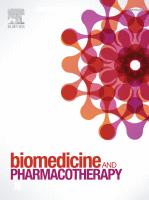
Fructus Lycii and Salvia miltiorrhiza Bunge extract attenuate oxidative stress-induced photoreceptor ferroptosis in retinitis pigmentosa
2023 Nov Biomedicine & Pharmacotherapy Yang Y, Wang Y, Deng Y, Lu J, Xiao L, Li J, et al.
Experimental Study Dan Shen Retinitis PigmentosaFructus Lycii and Salvia miltiorrhiza Bunge extract (FSE) shows potential as a clinical treatment for retinitis pigmentosa by inhibiting photoreceptor cell death following oxidative stress.
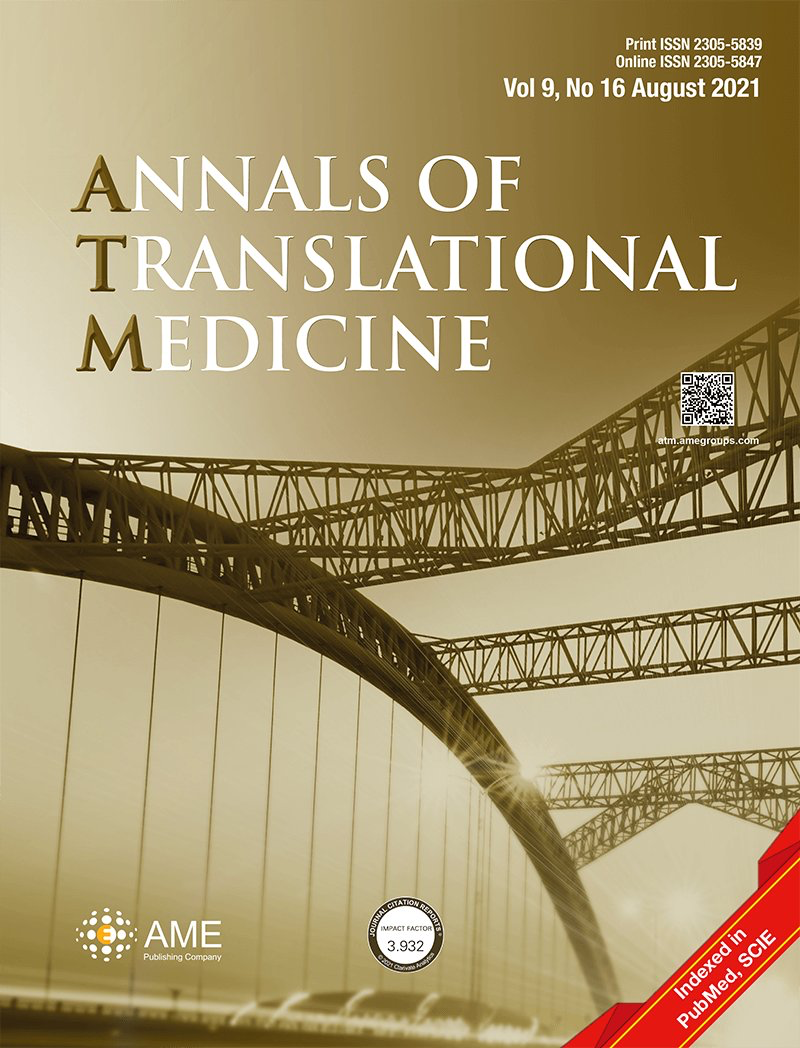
Mechanism and ingredients prediction of Radix Salviae-Angelicae Sinensis Radix-Lycii Fructus-Rehmanniae Radix Praeparata-Ginkgo Folium for retinitis pigmentosa therapy using network pharmacology and molecular docking analysis
2023 Oct Annals of Translational Medicine Wu J, Sun Z, Zhang D, Liu H, Wu J, Zhang S
Network Pharmacology Shu Di Huang Goji Berry Retinitis PigmentosaThe research unveils luteolin, quercetin, and kaempferol in RALRG as promising complementary components for RP treatment, with a key role in managing oxidative stress and PI3K/AKT signaling pathways.
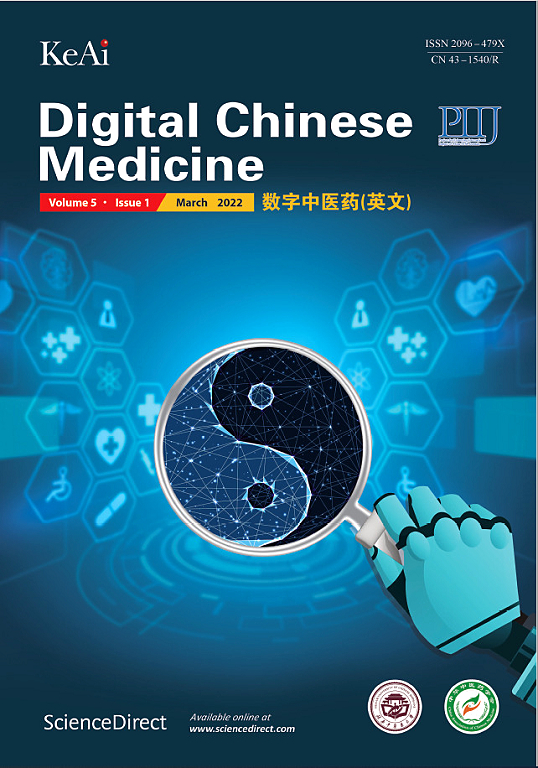
Inhibition of photoreceptor apoptosis in mice with retinitis pigmentosa through NF-κB/NLRP3 pathway suppression with Lycium barbarum polysaccharide
2023 Sep Digital Chinese Medicine Wang Y, Deng Y, Lu J, Peng J, Zhou Y, Yang Y, et al.
Experimental Study Animal Study Goji Berry Retinitis PigmentosaLycium barbarum polysaccharide may decrease apoptosis in retinal photoreceptor cells of retinitis pigmentosa mice by suppressing nuclear factor-kappa B/NOD-like receptor thermal protein domain-associated protein 3 pathway.
Research insights are moderated by the Research Hub team and offer an at-a-glance overview of interesting research findings.

2024 Traditional Medicine Research
The traditional Chinese medicine prescription combination of Chrysanthemi Flos, Cassiae Semen, Lycii Fructus, Angelicae Sinensis Radix and Salviae Miltiorrhizae Radix et Rhizoma presents potential for treating retinal diseases.
Data Mining Chrysanthemum
Exploring a novel traditional Chinese medicine prescription containing Chrysanthemi Flos for retinal diseases: an integrated strategy of data mining and network pharmacology
Zhang JX, Zhang KL, Chang XW, Gu JF, Wei SB, Zhu BY, et al.

2023 Heliyon
Qi Shen Tang, a traditional Chinese medicine, was found to suppress retinal cell death in retinitis pigmentosa by inhibiting a process called ferroptosis.
Experimental Study Ferroptosis Qi Shen Tang
Qi-Shen-Tang alleviates retinitis pigmentosa by inhibiting ferroptotic features via the NRF2/GPX4 signaling pathway
Xiong M, Ou C, Yu C, Qiu J, Lu J, Fu C, et al.

2023 Biomedicine & Pharmacotherapy
Fructus Lycii and Salvia miltiorrhiza Bunge extract (FSE) shows potential as a clinical treatment for retinitis pigmentosa by inhibiting photoreceptor cell death following oxidative stress.
Experimental Study Dan Shen
Fructus Lycii and Salvia miltiorrhiza Bunge extract attenuate oxidative stress-induced photoreceptor ferroptosis in retinitis pigmentosa
Yang Y, Wang Y, Deng Y, Lu J, Xiao L, Li J, et al.

2023 Annals of Translational Medicine
The research unveils luteolin, quercetin, and kaempferol in RALRG as promising complementary components for RP treatment, with a key role in managing oxidative stress and PI3K/AKT signaling pathways.
Network Pharmacology Goji Berry Shu Di Huang
Mechanism and ingredients prediction of Radix Salviae-Angelicae Sinensis Radix-Lycii Fructus-Rehmanniae Radix Praeparata-Ginkgo Folium for retinitis pigmentosa therapy using network pharmacology and molecular docking analysis
Wu J, Sun Z, Zhang D, Liu H, Wu J, Zhang S

2023 Digital Chinese Medicine
Lycium barbarum polysaccharide may decrease apoptosis in retinal photoreceptor cells of retinitis pigmentosa mice by suppressing nuclear factor-kappa B/NOD-like receptor thermal protein domain-associated protein 3 pathway.
Experimental Study Goji Berry
Inhibition of photoreceptor apoptosis in mice with retinitis pigmentosa through NF-κB/NLRP3 pathway suppression with Lycium barbarum polysaccharide
Wang Y, Deng Y, Lu J, Peng J, Zhou Y, Yang Y, et al.
Review Articles
Review articles summarise and critically evaluate the current state of research on a specific topic or field by synthesising multiple primary research studies.

Neuroinflammation in retinitis pigmentosa: Therapies targeting the innate immune system
2022 Oct 27 Frontiers in Immunology Zhao L, Hou C, Yan N
Review Article Experimental Study Retinitis PigmentosaInflammation modulation—targeting innate immune signals and exploring epigenetic regulation, the gut microbiome, and herbal agents—emerges as a promising treatment strategy for retinitis pigmentosa.

Research Progress in TCM Treatment of Retinitis Pigmentosa
2022 May 19 Journal of Clinical and Nursing Research Yang Q, Zhang L, Cheng J, Tong J
Review Article Retinitis PigmentosaTraditional Chinese medication, acupuncture, and their integration can be used effectively for the treatment of Retinitis Pigmentosa (RP) improving vision and visual field.
Role of Curcumin in Retinal Diseases—A review
2022 Jan 11 Graefe's Archive for Clinical and Experimental Ophthalmology Chandrasekaran PR, Madanagopalan VG
Review Article Retinitis PigmentosaCurcumin, a spice used in Indian cooking, shows potential therapeutic effects in various retinal diseases, including during the COVID era.
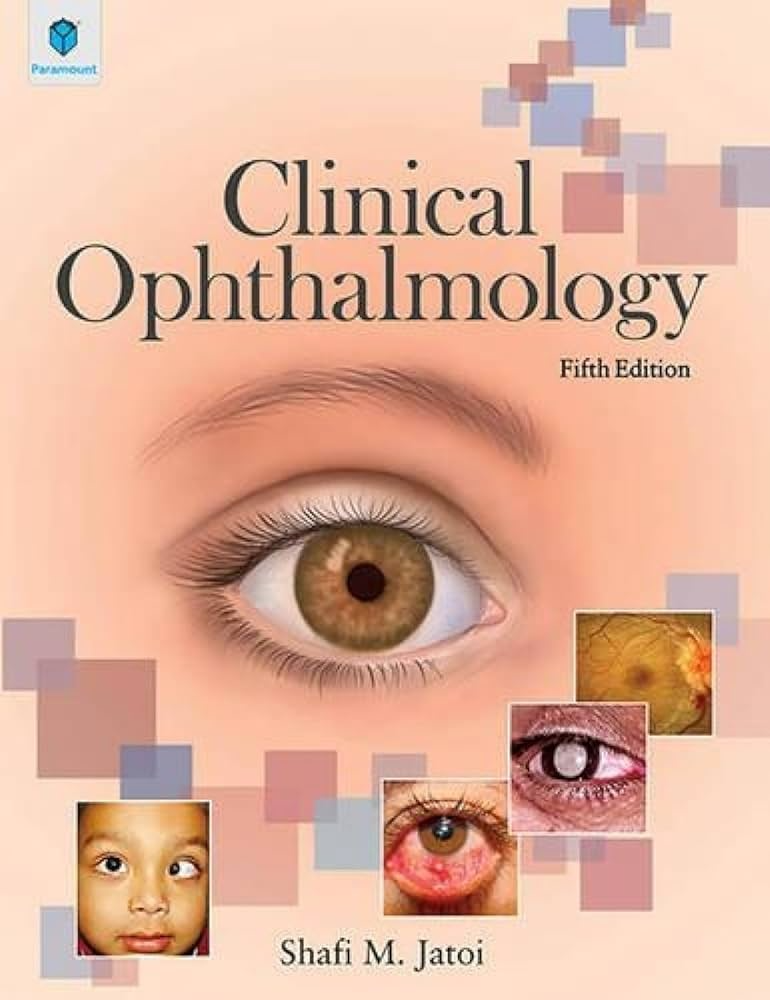
Recent Advances and Disputes About Curcumin in Retinal Diseases
2021 Jun Clinical Ophthalmology Nebbioso M, Franzone F, Greco A, Gharbiya M, Bonfiglio V, Polimeni A
Review Article Turmeric Retinitis PigmentosaCurcumin, with its anti-inflammatory, antioxidant, antimicrobial and antimutagenic properties, is a potential therapeutic agent for retinal diseases.
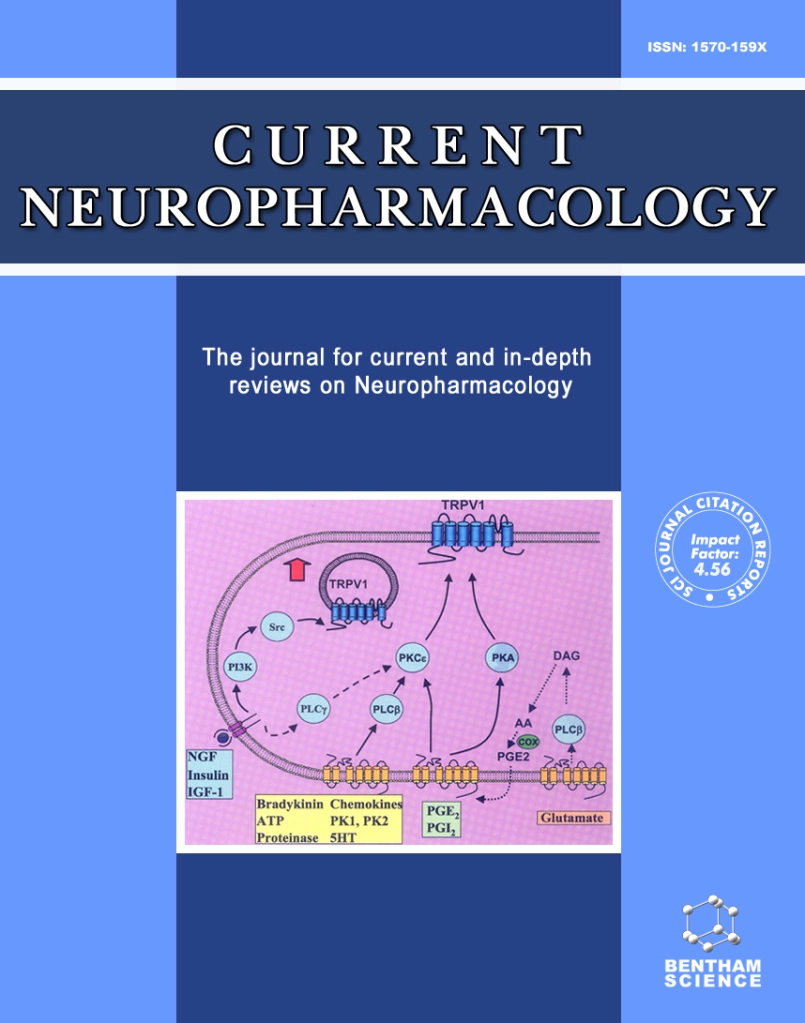
Pharmacological Effects of Saffron and its Constituents in Ocular Disorders from in vitro Studies to Clinical Trials: A Systematic Review
2021 Mar Current Neuropharmacology Sepahi S, Ghorani-Azam A, Hossieni SM, Mohajeri SA, Khodaverdi E
Review Article Systematic Review Retinitis Pigmentosa SaffronSaffron and its components, crocin and crocetin, show potential in treating various eye disorders, including inflammation, macular edema, and glaucoma.
Clinical Trials
Clinical trials are research studies that involve people and are conducted to evaluate the safety and efficacy of new treatments or interventions, such as drugs, medical devices, or behavioural therapies.
Study Protocols
Published study protocols are detailed plans that outline the objectives, methodology, statistical analyses, and organisation of a research study that have been made publicly available for others to review and use as a reference.
Presentation Slides

Data Mining
The traditional Chinese medicine prescription combination of Chrysanthemi Flos, Cassiae Semen, Lycii Fructus, Angelicae Sinensis Radix and Salviae Miltiorrhizae Radix et Rhizoma presents potential for treating retinal diseases.
Zhang JX, Zhang KL, Chang XW, Gu JF, Wei SB, Zhu BY, Wang Q, Wu DL, Gui SY, Yan H, Duan JA

Experimental Study
Qi Shen Tang, a traditional Chinese medicine, was found to suppress retinal cell death in retinitis pigmentosa by inhibiting a process called ferroptosis.
Xiong M, Ou C, Yu C, Qiu J, Lu J, Fu C, Peng Q, Zeng M, Song H

Experimental Study
Fructus Lycii and Salvia miltiorrhiza Bunge extract (FSE) shows potential as a clinical treatment for retinitis pigmentosa by inhibiting photoreceptor cell death following oxidative stress.
Yang Y, Wang Y, Deng Y, Lu J, Xiao L, Li J, Zhou Y, Nie F, Chen X, Peng J, Tan H, Qin Y, Peng Q

Network Pharmacology
The research unveils luteolin, quercetin, and kaempferol in RALRG as promising complementary components for RP treatment, with a key role in managing oxidative stress and PI3K/AKT signaling pathways.
Wu J, Sun Z, Zhang D, Liu H, Wu J, Zhang S

Experimental Study
Lycium barbarum polysaccharide may decrease apoptosis in retinal photoreceptor cells of retinitis pigmentosa mice by suppressing nuclear factor-kappa B/NOD-like receptor thermal protein domain-associated protein 3 pathway.
Wang Y, Deng Y, Lu J, Peng J, Zhou Y, Yang Y, Peng Q
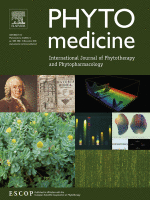
Experimental Study
The Chinese herbal medicine Bujing Yishi tablets could alleviate photoreceptor degeneration in retinitis pigmentosa by inhibiting microglial over-activation and inflammation.
Qi Y, Liu L, Liang D, Tang S, Yu X, Ye H, Chen N

Experimental Study
Zhangyanming Tablets show potential as a protective agent for retinal function in early-stage, genetically-caused blindness in mice, possibly due to their antioxidant and anti-/pro-apoptotic properties.
Huang Z, Huang Q, Xu K, Liang L, Li Y, Zhou W, Ning N, Zhou J, Hu J, Liu S, Dang L

Review Article
Inflammation modulation—targeting innate immune signals and exploring epigenetic regulation, the gut microbiome, and herbal agents—emerges as a promising treatment strategy for retinitis pigmentosa.
Zhao L, Hou C, Yan N

Review Article
Traditional Chinese medication, acupuncture, and their integration can be used effectively for the treatment of Retinitis Pigmentosa (RP) improving vision and visual field.
Yang Q, Zhang L, Cheng J, Tong J

Review Article
Curcumin, a spice used in Indian cooking, shows potential therapeutic effects in various retinal diseases, including during the COVID era.
Chandrasekaran PR, Madanagopalan VG

Experimental Study
Zeaxanthin dipalmitate, a wolfberry-derived carotenoid, can delay retinal degeneration in mice modelling Retinitis Pigmentosa mainly through its anti-inflammatory and oxidative stress effects.
Liu F, Liu X, Zhou Y, Yu Y, Wang K, Zhou Z, Gao H, So KF, Vardi N, Xu Y

Review Article
Curcumin, with its anti-inflammatory, antioxidant, antimicrobial and antimutagenic properties, is a potential therapeutic agent for retinal diseases.
Nebbioso M, Franzone F, Greco A, Gharbiya M, Bonfiglio V, Polimeni A
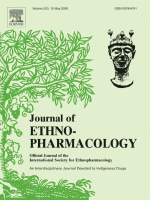
Experimental Study
Fructus Lycii and Salvia miltiorrhiza Bunge extract improve retinal morphology and function by regulating the Nrf2/HO-1 pathway to curb oxidative reactions.
Ou C, Jiang P, Tian Y, Yao Z, Yang Y, Peng J, Zeng M, Song H, Peng Q

Review Article
Saffron and its components, crocin and crocetin, show potential in treating various eye disorders, including inflammation, macular edema, and glaucoma.
Sepahi S, Ghorani-Azam A, Hossieni SM, Mohajeri SA, Khodaverdi E
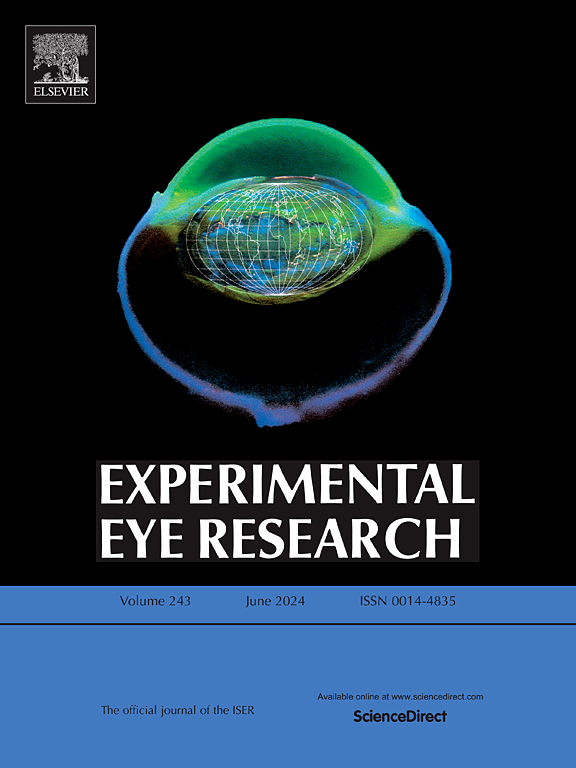
Experimental Study
Gypenosides, the main functional component from the vine Gynostemma pentaphyllum, display potential as a treatment for Retinitis Pigmentosa by protecting photoreceptor cells from degeneration.
Alhasani RH, Zhou X, Biswas L, Li X, Reilly J, Zeng Z, Shu X
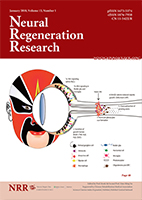
Review Article
Saffron shows potential as a promising therapeutic agent in treating neurodegenerative ocular diseases.
Ramírez JM, Salazar JJ, Fernández-Albarral JA, de Hoz R, Ramírez AI, López-Cuenca I, Salobrar-García E, Pinazo-Durán MD
Executive Summary
Write an executive summary in the form of a blog article on the topic of "Research into Chinese medicine treatment for Retinitis Pigmentosa" summarising the research below and using language that can be easily understood by patients and avoiding medical jargon using a professional and caring tone of voice.
Write an executive summary in the form of a blog article on the topic of "Researched Chinese medicine treatments for Retinitis Pigmentosa" summarising the research below in an objective and easy to understand way, and using language that can be easily understood by patients. Group the article into Chinese medicine treatments first, followed by nutrition and other treatments. Avoid using medical jargon and use a professional and caring tone of voice.
Write me a concise but easy to understand executive summary on the topic of "Chinese medicine treatments for Retinitis Pigmentosa" based on the following research that I will give you. Your summary should be 2 paragraphs long in Australian English spelling and include references to the studies.
A Data Mining published in 2024 in the journal Traditional Medicine Research found that The traditional Chinese medicine prescription combination of Chrysanthemi Flos, Cassiae Semen, Lycii Fructus, Angelicae Sinensis Radix and Salviae Miltiorrhizae Radix et Rhizoma presents potential for treating retinal diseases. Methodology: The researchers employed data mining to discern a new traditional Chinese medicine (TCM) prescription against retinal diseases and explore its medication rule. This was followed by constructing a network of TCMs, core ingredients, core targets, and core pathways using network pharmacology. The binding ability between core active ingredients and core targets was then verified through molecular docking and molecular dynamics simulation techniques. Discussion: The novel TCM prescription screened in this study bears great potential in retinal diseases treatment through a unique mechanism of action. This mechanism involves TCM prescriptions that possess clearing heat and supplementing activities, associated with liver and lung meridians. The mechanism was found to act by modulating several core targets implicated in multiple core pathways such as the AGE-RAGE signaling pathway in diabetic complications, and the PI3K-Akt signaling pathway, among others. This potentially inhibits the inflammatory response, oxidative stress, and retinal neovascularization and apoptosis of retinal ganglion cells and retinal pigment epithelial cells. This improves retinal structural impairment and can have a significant impact on the treatment of retinal diseases.
A Experimental Study published in 2023 in the journal Heliyon found that Qi Shen Tang, a traditional Chinese medicine, was found to suppress retinal cell death in retinitis pigmentosa by inhibiting a process called ferroptosis. The researchers investigated the potential mechanism of Qi-Shen-Tang (QST), a combination of two traditional Chinese medicines, on retinitis pigmentosa, an eye disease. They induced a retinitis pigmentosa model in mice while subsequently treating them with QST. They then examined the impact of the medicine on the tissue morphology and function of the retina in these model mice, in addition to monitoring factors such as retinal blood flow and fundus structure. The study found that the treatment with QST led to notable improvements in the retinal tissue morphology and function. In addition, they observed an increase in retinal blood flow and normalization of the fundus structure. Following the treatment, the amounts of iron and malondialdehyde in the retinal tissue were significantly reduced, while the levels of superoxide dismutase, glutathione, and the protein expressions of various enzymes significantly increased. Molecular docking results also revealed potential interactions between the components of QST and key proteins of a particular signaling pathway, namely the Nuclear factor erythroid 2-related factor 2/ Glutathione peroxidase 4 pathway. The results suggest that QST may inhibit ferroptosis by suppressing this signaling pathway, thereby mitigating retinitis pigmentosa-induced damage to the retinal tissue.
A Experimental Study published in 2023 in the journal Biomedicine & Pharmacotherapy found that Fructus Lycii and Salvia miltiorrhiza Bunge extract (FSE) shows potential as a clinical treatment for retinitis pigmentosa by inhibiting photoreceptor cell death following oxidative stress. The study utilized hydrogen peroxide to induce oxidative stress in 661 W cells, which were examined with flow cytometry and an enzyme-linked immunosorbent assay. The impact of this oxidative stress on the cells’ mitochondria was observed using an electron microscope to understand the nature of cell death. The study also analyzed the compensatory effect of the Fructus Lycii and Salvia miltiorrhiza Bunge extract on the retinal structure and function of rd10 mice using histopathological examination, fundus photographs, and electroretinography. Protein levels were evaluated using Western blot assays, specifically targeting proteins including Tumor Protein p53, Solute Carrier Family 7 Member 11, Glutathione peroxidase 4, Arachidonate-12-Lipoxygenase, and Dipeptidyl peptidase 4. The results showed that hydrogen peroxide-induced oxidative stress in 661 W cells increased oxidative stress products and certain protein expressions, while decreasing others. Notably, the activation of Glutathione peroxidase 4 did not lessen reactive oxygen species generation and had little impact on cell death. The research discovered that both Ferrostatin-1 and the extract could lessen reactive oxygen species generation and inhibit cell death of photoreceptors in retinitis pigmentosa, achieving this by inhibiting the expression of one protein and increasing the expression of two others.
A Network Pharmacology published in 2023 in the journal Annals of Translational Medicine found that The research unveils luteolin, quercetin, and kaempferol in RALRG as promising complementary components for RP treatment, with a key role in managing oxidative stress and PI3K/AKT signaling pathways. The research used various databases such as Traditional Chinese Medicine Systems Pharmacology Database and Analysis Platform, GeneCards, and the Online Mendelian Inheritance in Man database to gather the ingredients of RALRG and potential targets of RP and RALRG. A protein-protein interaction network was constructed to visualize these interactions. The R program was utilized to perform functional enrichment. The researchers constructed a visual RALRG-RP-pathway pharmacology network using Cytoscape 3.9.1 and applied molecular docking to compute binding affinity. The research revealed a total of 132 effective active elements in RALRG correlating to 248 target genes. Ninety-two intersection target genes were discovered from the overlap of RP- and RALRG-related genes. These intersection targets were discovered to be primarily involved in oxidative stress, responding to metal ions, and handling chemical stress. Several molecular pathways such as PI3K-AKT and MAPK were identified as closely connected to RP therapy. A potential pharmacology network was designed for the RALRG-RP-pathway with AKT1 and JUN being considered the main targets. The active ingredients luteolin, quercetin, and kaempferol were highlighted as crucial for this mechanism. RALRG overall was established as a main regulator for oxidative stress and PI3K/AKT signaling pathways in the treatment of RP.
A Experimental Study published in 2023 in the journal Digital Chinese Medicine found that Lycium barbarum polysaccharide may decrease apoptosis in retinal photoreceptor cells of retinitis pigmentosa mice by suppressing nuclear factor-kappa B/NOD-like receptor thermal protein domain-associated protein 3 pathway. The team carried out both in vivo and in vitro studies. Initially, mouse retinal ganglion cells were categorized into groups based on the doses of Lycium barbarum polysaccharide they were given and a positive drug control group. These cells were then subject to different H2O2 concentrations to induce apoptosis. Techniques such as flow cytometry, immunofluorescence, and western blot were used to evaluate cell viability, apoptosis rate, and expression of various markers. For in vivo research, the team used C57/BL6 and Rd10 mice divided into similar groups as the in vitro experiment. The mice underwent drug treatment for four weeks, after which their retina's response to light and general health were evaluated using an electroretinogram and histopathological examination. The in vitro experiments showed that the apoptosis rate of ganglion cells significantly increased in the model group, along with up-regulation of certain proteins. However, a high dose of Lycium barbarum polysaccharide decreased the cell apoptosis rate and the levels of certain proteins. Similarly, in vivo testing showed that a high dose of the substance significantly aided in morphological alterations in a retina layer of Rd10 mice, and down-regulated the expression levels of a number of apoptosis-related proteins.
A Experimental Study published in 2023 in the journal Phytomedicine found that The Chinese herbal medicine Bujing Yishi tablets could alleviate photoreceptor degeneration in retinitis pigmentosa by inhibiting microglial over-activation and inflammation. This experiment began with the creation of a rat model for retinitis pigmentosa through intraperitoneal injection of N-Methyl-N-Nitrosourea. After the rats developed retinal degeneration, they were treated with Bujing Yishi tablets. To confirm the impact of these tablets on the rat model, the researchers conducted several tests, including examination of the retinal cytokine levels and expression of IBA-1 in microglia. This let them monitor the apoptotic cells, ONL thickness, retinal morphology, and photoreceptor degeneration. They further used western blot, real-time polymerase chain reaction, and immunofluorescence to determine the mRNA and protein expression levels involved in the P2X7R/CX3CL1/CX3CR1 pathway. Following the treatment of the rats with Bujing Yishi tablets, there was significant relief in the morphological structure deterioration of the retinas and the photoreceptor degeneration. The herbal tablets also reduced the number of apoptotic cells in the ONL and prevented the thinning of the ONL, pointing to their effectiveness in retinal preservation. Additionally, the tablets lowered the level of over-activated microglia and decreased retinal levels of inflammatory markers. Bujing Yishi tablets were also observed to decrease the protein and mRNA expression of P2X7, CX3CL1, and CX3CR1, further exhibiting their mechanism of retinal preservation through influence on the P2X7R/CX3CL1/CX3CR1 pathway.
A Experimental Study published in 2023 in the journal Biomedicine & Pharmacotherapy found that Zhangyanming Tablets show potential as a protective agent for retinal function in early-stage, genetically-caused blindness in mice, possibly due to their antioxidant and anti-/pro-apoptotic properties. Eighty mice with Retinitis Pigmentosa (RP) were divided into two groups, with one group receiving Zhangyanming Tablets (ZYMT) and a control group getting distilled water. After a period of 7 and 14 days, the researchers conducted tests through electroretinogram, fundus photography, and histological examination to assess the retinal function and structure of the subjects. They furthered the study using TUNEL, immunofluorescence and qPCR to evaluate cell apoptosis and the expressions of particular genes. The ZYMT-treated mice displayed a notable enhancement in retinal reactions and overall preservation of retinal structure when compared to the control group. Particularly noticeable were increases in retinal thickness and cell count, alongside a significantly lowered rate of cell death. A comprehensive follow-up shows the altered expressions of several genes in the retina following the application of ZYMT. These results, combined, suggest a key role of ZYMT in mitigating the effects of RP especially in early stages.
A Review Article published in 2022 in the journal Frontiers in Immunology found that Inflammation modulation—targeting innate immune signals and exploring epigenetic regulation, the gut microbiome, and herbal agents—emerges as a promising treatment strategy for retinitis pigmentosa. The study's methodology began by identifying and emphasizing the role of neuroinflammation in the progression of retinitis pigmentosa (RP). It delved into the effects of continuous sterile inflammation, caused by abnormal activation of immunity, which leads to neuron loss and structural destruction in RP. The main focus of the research was to review therapeutic strategies, concentrating on the modulation of innate immune signals like Tumor Necrosis Factor alpha (TNFα) signaling, Toll-Like Receptor (TLR) signaling, NLRP3 inflammasome activation, chemokine signaling, and Janus Kinase/Signal Transducer and Activator of Transcription (JAK/STAT) signaling. Post this initial evaluation, the study proceeded to explore novel therapeutic strategies. It examined how the pattern of gene activation and deactivation (epigenetic regulation), the gut microbiome (the collection of microbes living in our intestines), and various herbal agents can serve as possible treatment paths for retinitis pigmentosa.
A Review Article published in 2022 in the journal Journal of Clinical and Nursing Research found that Traditional Chinese medication, acupuncture, and their integration can be used effectively for the treatment of Retinitis Pigmentosa (RP) improving vision and visual field. Methodologies used in the study include treating RP patients with various Traditional Chinese Medicine preparations such as Ziyin Mingmu pill, Zhujing pill, Mingmu Dihuang decoction, Ginkgo Mingmu prescription, and Yiqi Mingmu pill. These preparations aimed to treat the syndrome of deficiency and excess by improving vision and visual field and enhancing blood supply to the eyes. Acupuncture techniques including the “two dragons playing with pearls” method and fire needling on the Fengchi point were also explored. Finally, various combinations of acupuncture and medication were tested for their efficacy in improving RP symptoms. In terms of results, the studies found noticeable clinical effects and therapeutic outcomes. Most of the investigated treatments showed improvement in visual acuity and visual field, contributing to a high total effective rate. The effectiveness of the remedies was compared with western medication, with the integrated Traditional Chinese Medicine approaches demonstrating superior results. Each Traditional Chinese Medicine treatment method, acupuncture technique, or their combination demonstrated a significant enhancement in visual functions and patient symptoms.
A Review Article published in 2022 in the journal Graefe's Archive for Clinical and Experimental Ophthalmology found that Curcumin, a spice used in Indian cooking, shows potential therapeutic effects in various retinal diseases, including during the COVID era. The research used PubMed and MEDLINE databases to examine a wide range of studies pertaining to the role of curcumin in various retinal diseases and its use during the COVID era. Specific diseases investigated include diabetic retinopathy, age-related macular degeneration, retinitis pigmentosa, retinal ischemia reperfusion injury, and proliferative vitroretinopathy. In these studies, curcumin's performance was tested in different experimental models, where it demonstrated pleiotropic effects through its action on various cell types like HRPC, HREC and ARPE-19. The research also evaluated the molecule's impact on retinal endothelial cells and its ability to inhibit actions of certain proteins and genes implicated in retinal disease. Moreover, the search also included curcumin's influence in the COVID-19 landscape. Discussing the results, curcumin proved efficacious in retinal disease management by increasing antioxidant enzymes, reducing inflammatory mediators, and inhibiting growth factors. In the context of diabetic retinopathy specifically, curcumin acted by reducing Reactive Oxygen Species (ROS) and inhibiting apoptosis-inducing proteins. Furthermore, curcumin downregulated several inflammatory molecules and hindered retinoblastoma cell proliferation, migration, and apoptosis. In the COVID era, curcumin showcased its potential by inhibiting viral replication and cytokine storm.
A Experimental Study published in 2021 in the journal Journal of Neurochemistry found that Zeaxanthin dipalmitate, a wolfberry-derived carotenoid, can delay retinal degeneration in mice modelling Retinitis Pigmentosa mainly through its anti-inflammatory and oxidative stress effects. In the study's methodology, Zeaxanthin dipalmitate (ZD) was intravitreally injected into mice on postnatal day 16. Subsequent assessment of retinal function and structure were made at P25 using visual behavior tests, multi-electrode-array recordings, and immunostaining. The involved gene expressions and their regulation by ZD were delved into through transcriptome sequencing and western blotting. In the discussion of results, it was discovered that ZD treatment significantly improved the visual behavior of the mice and delayed degeneration of the retinal photoreceptors, enhancing the light responses of photoreceptors, bipolar cells, and retinal ganglion cells. The ZD treatment led to a decline of up-regulated genes connected to inflammation, apoptosis, and oxidative stress. The study found that ZD reduces the activation of signal transducer and activator of transcription 3 and chemokine ligand 2, down-regulates the expression of the inflammatory factor GFAP, and withholds extracellular signal regulated protein kinases and P38, but not JNK pathways. All these findings indicate the potential of ZD as treatment for Retinitis Pigmentosa.
A Review Article published in 2021 in the journal Clinical Ophthalmology found that Curcumin, with its anti-inflammatory, antioxidant, antimicrobial and antimutagenic properties, is a potential therapeutic agent for retinal diseases. This review paper uses various pieces of research from the literature to detail the characteristics of curcumin, a molecule produced by plants. The paper particularly focuses on the beneficial and controversial aspects of curcumin. It talks about the retina's susceptibility to oxidative stress due to its cell composition and constant exposure to photons, highlighting that retinal ganglion cells and photoreceptors are particularly sensitive to oxidative damage. The paper also points to studies that link an imbalance in reactive oxygen species to a wide range of retinal diseases. In the discussion of results, it is stated that a number of studies suggest that curcumin can be well tolerated by humans when taken orally and does not tend to have negative effects, making it a promising candidate for retinal disease treatment. However, a primary limitation is curcumin's poor bioavailability; the body can only absorb a small fraction of the substance as an active compound. Despite that, efforts have been made to improve curcumin's accessibility to target tissues in sufficient quantities.
A Experimental Study published in 2021 in the journal Journal of Ethnopharmacology found that Fructus Lycii and Salvia miltiorrhiza Bunge extract improve retinal morphology and function by regulating the Nrf2/HO-1 pathway to curb oxidative reactions. In terms of methodology, Fructus Lycii and Salvia miltiorrhiza Bunge (FS) extracts were identified through Ultra Performance Liquid Chromatography analysis and administered intragastrically over four weeks to Rd10 mice, known to model retinitis pigmentosa. Following the animals' sacrifice, histopathological examination and Scotopic electroretinography analysis were performed. Oxidative stress markers were determined and the expression levels of Nrf2 and HO-1 mRNA were evaluated via quantitative real-time PCR. Western blot and immunohistochemistry were employed to identify the expression and distribution of Nrf2 and HO-1 protein. In the discussion of the results, substantial morphological improvements were observed regarding the thickness and number of the Outer Nuclear Layer, along with significant functional enhancements in a-amplitude and b-wave amplitude measurements, following FS extract treatment. In addition, the treatment led to a considerable escalation in superoxide dismutase and glutathione peroxidase levels and a reduction in malondialdehyde levels. Furthermore, FS extract was found to stimulate the up-regulation of Nrf2 and HO-1 mRNA and protein expression, possibly underlying the observed retinal enhancements.
A Review Article published in 2021 in the journal Current Neuropharmacology found that Saffron and its components, crocin and crocetin, show potential in treating various eye disorders, including inflammation, macular edema, and glaucoma. Using key search terms like "eye disorders" and "saffron", the authors conducted a systematic review of various literature databases such as PubMed, Scopus, Web of Science, and Google Scholar. Their search included all types of studies, with no strict inclusion criteria, covering clinical studies, in vivo and in vitro studies. They extracted data from each study for qualitative analysis. The review started with 78 articles, narrowed down to 29 relevant ones. Nine articles were clinical trials, and 20 articles examined the impact of saffron on cellular and molecular aspects of eye disorders. Through their analysis, researchers found that saffron protects photoreceptor cells from light-induced damage, decreases glucose levels in diabetic mice, and mitigates the pro-inflammatory response in retinal cells. They reported improved visual function in age-related macular edema and lowered intraocular pressure in patients with glaucoma. Furthermore, crocin, one of the saffron's main ingredients, was found to enhance the best corrected visual acuity and decrease central macular thickness in patients suffering from diabetic maculopathy.
A Experimental Study published in 2020 in the journal Experimental Eye Research found that Gypenosides, the main functional component from the vine Gynostemma pentaphyllum, display potential as a treatment for Retinitis Pigmentosa by protecting photoreceptor cells from degeneration. In this study, researchers used zebrafish carrying a specific mutation that leads to early retinal degeneration like in Retinitis Pigmentosa, a group of genetic retinal disorders. The mutation, present in the retinitis pigmentosa GTPase regulator interacting protein 1 gene, was exposed to Gypenosides. The substance was sourced from Gynostemma pentaphyllum, a climbing vine, and previously found to combat oxidative stress and inflammation in optic neuritis cells. The results suggest significant benefits from the application of Gypenosides to retinitis pigmentosa. Treatment of the mutated zebrafish resulted in a notable decrease in the death rate of photoreceptor cells. The reaction of antioxidant genes typically associated with oxidative stress was also significantly reduced. Furthermore, there were marked reductions in reactive oxygen species and malondialdehyde production, along with diminished expression of pro-inflammatory cytokines. Overall, the outcome indicates that Gypenosides effectively counteracted the harmful effects of the mutation, protecting the photoreceptors from degeneration.
A Review Article published in 2020 in the journal Neural Regeneration Research found that Saffron shows potential as a promising therapeutic agent in treating neurodegenerative ocular diseases. This research thoroughly explores the therapeutic properties of Saffron (Crocus sativus L.), traditionally used in food and medicine, focusing on its anti-inflammatory, antioxidant, and anti-apoptotic activities. These properties stem from saffron's main metabolites, notably crocin and crocetin. In addition to investigating its commonly attributed properties, the study delves into the possible neuroprotective role of saffron in neurodegenerative diseases like Parkinson's and Alzheimer's, looking at both experimental models and clinical studies in patients. The findings reveal that saffron has shown beneficial effects in the treatment of ocular neurodegenerative conditions including diabetic retinopathy, retinitis pigmentosa, age-related macular degeneration, and glaucoma. This study offers an in-depth review and report on ongoing investigations of saffron extract’s benefits for ocular diseases, particularly neurodegenerative ones.
Moderation Tools
Topic
Sign In
Users not signed in are limited to viewing the 5 most recent items of content.
